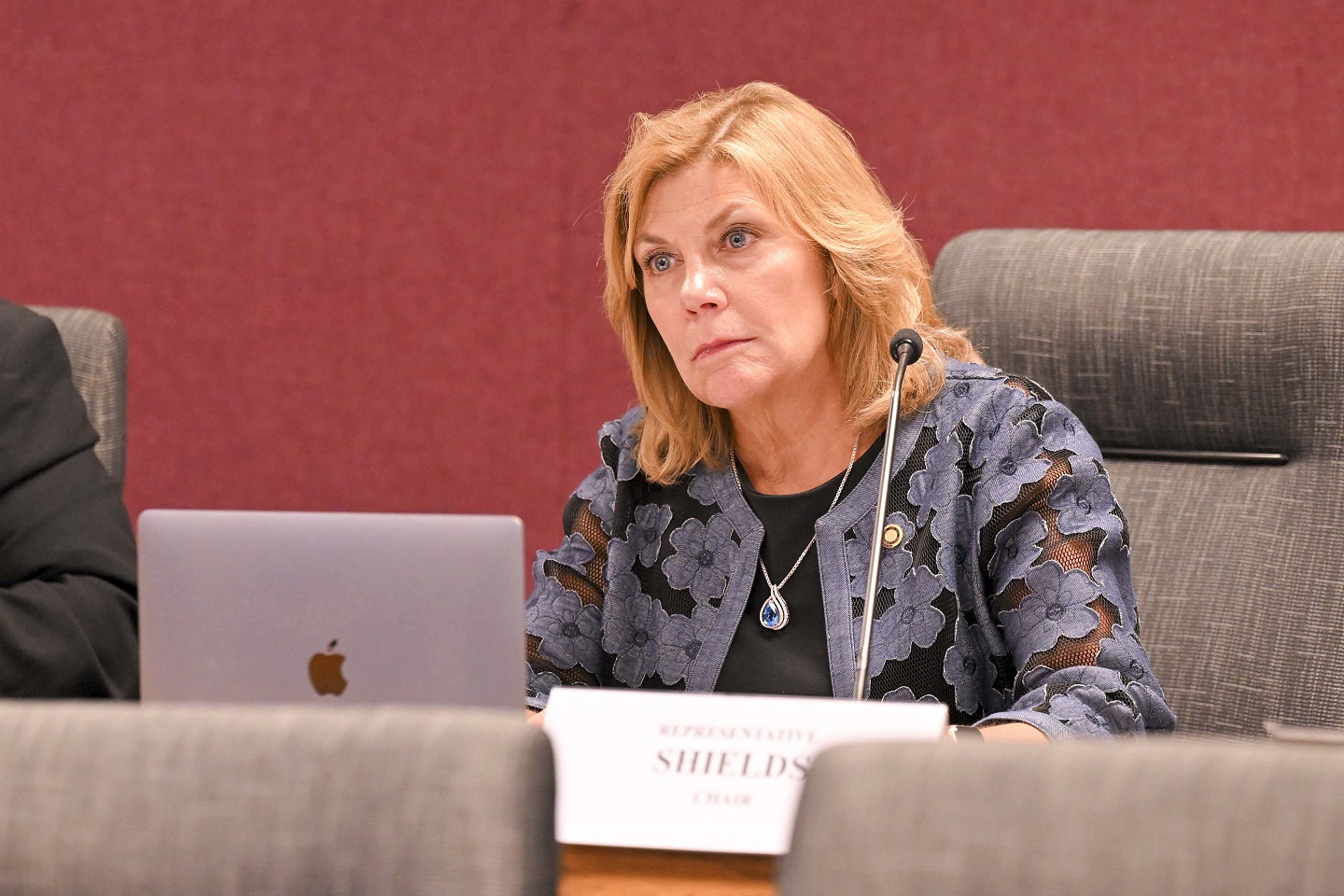A House effort to arrive at a successful performance-based model for funding the state’s colleges and universities launched on Tuesday.
Representative Brenda Shields (Photo: Tim Bommel, Missouri House Communications)
The House Special Interim Committee on Higher Education Performance Funding held an introductory hearing, in which it heard several presentations about the past attempts at performance-based funding.
Committee Chair Brenda Shields (R-St. Joseph) said it’s important to know what’s come before.
“This has been attempted several times. We haven’t been successful,” Shields said.
She said if there is to be a chance for a better result this time, everyone must have a seat at the table.
“It’s going to require us to engage all the stakeholders. That’s all of our universities and our community colleges, all of our institutes of higher education along with the [Department of Higher Education] to be able for us to be successful in developing a formula that actually has a measurement model to it. How do we know how we’re performing if we don’t have measurements? So that’s what we’re really looking for, is how can we measure our fixed costs, the variable costs, and then our performance funding on top of that, so that our universities actually know what they’re working towards.”
Representative Kevin Windham (Photo: Tim Bommel, Missouri House Communications)
Shields said if not all of the state’s institutions have buy-in, any new formula will be doomed.
“If [a legislator] doesn’t feel as if their individual university that they represent is happy, they will vote against it, or I believe I will vote against it if my university felt as if they were not receiving fair funding. I would vote against it and it would bring the people of my region against it, and it’s really hard to pass a formula unless you feel as if everyone is a winner somewhere in that formula.”
What the legislature is using now in setting higher education funding is a “base plus” model, but Shields said no one has been able to tell her where that base came from.
“Every year, if the legislature thinks that we can afford a three-percent increase, we use the current base and we add three percent to it. First of all, nobody can explain how the base was created. Secondly, it doesn’t take into account that things have changed, so we give everybody a three percent increase based on their base and maybe their student enrollment has increased dramatically. Maybe it’s decreased dramatically. Maybe they’ve taken on teaching some degrees that are more expensive to offer … and we haven’t taken any of that into account. We just continue to add a percent to this base number that no one can remember how it was created.”
MU System President Mun Choi addresses the House Special Interim Committee on Higher Education Performance Funding (Photo: Tim Bommel, Missouri House Communications)
Tuesday’s hearing set the Department of Higher Education to the task of creating a work group with representation from all the institutions of higher education in the state.
“They will begin to sit down and break down what’s the fixed cost. Let’s define ‘fixed costs,’ what are your fixed costs, what are the variable costs of running an institution, and then of course, what should be our measurements for a performance funding model? They will agree upon what those measurements are and then we’ll move from there.”
Shields said the goal is not to pass a new funding mechanism in the 2025 legislative session.
“What our hope is for the ’25 session is that we have a system in place which we can test and simulate and make tweaks to, and so we will spend the entire ’25 session making tweaks. I do not believe that we’ll pass legislation in ’25. I think the soonest that we’ll pass legislation will be in ’26 for use in ’27.”
The committee will meet three more times this year.


